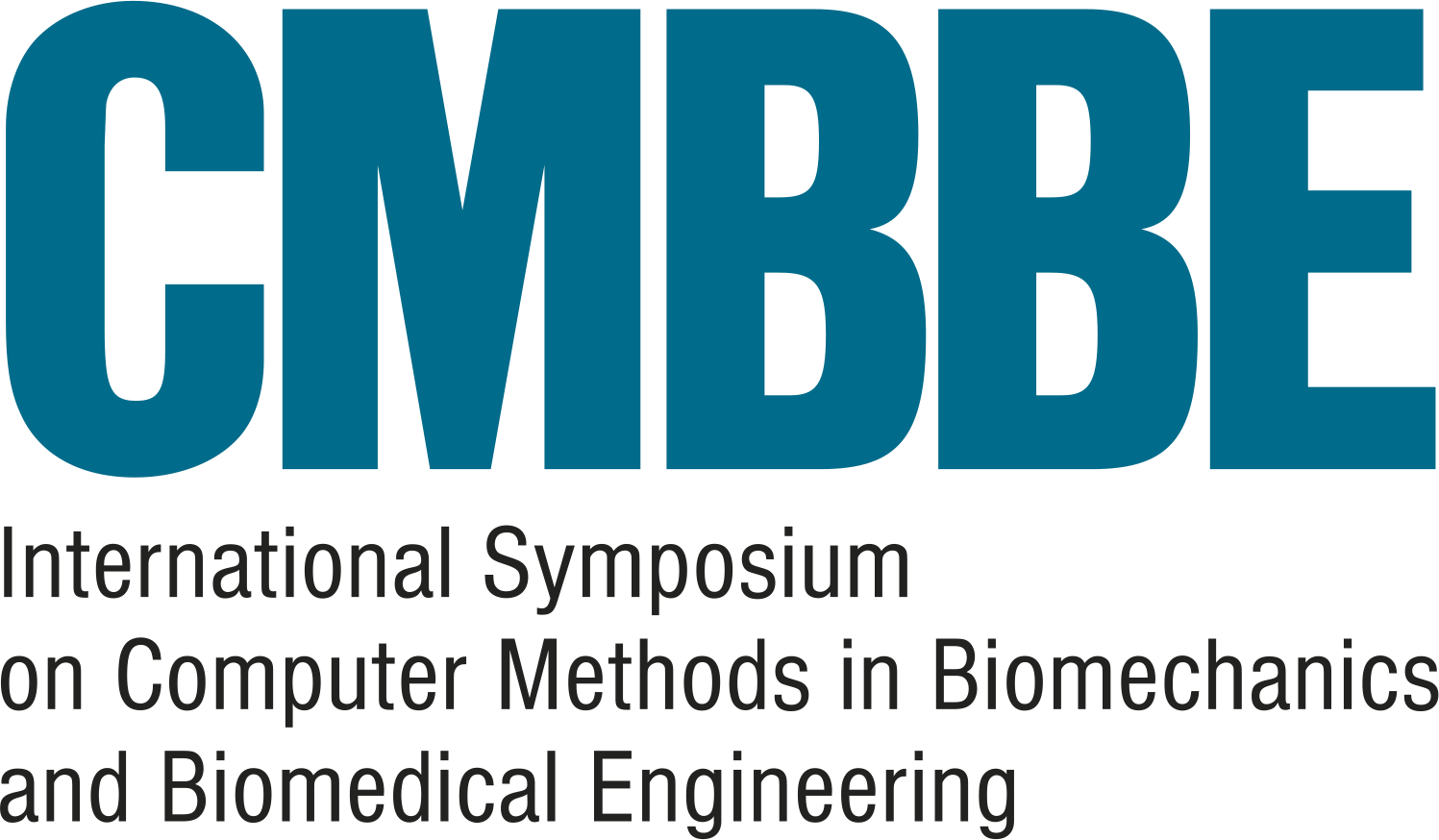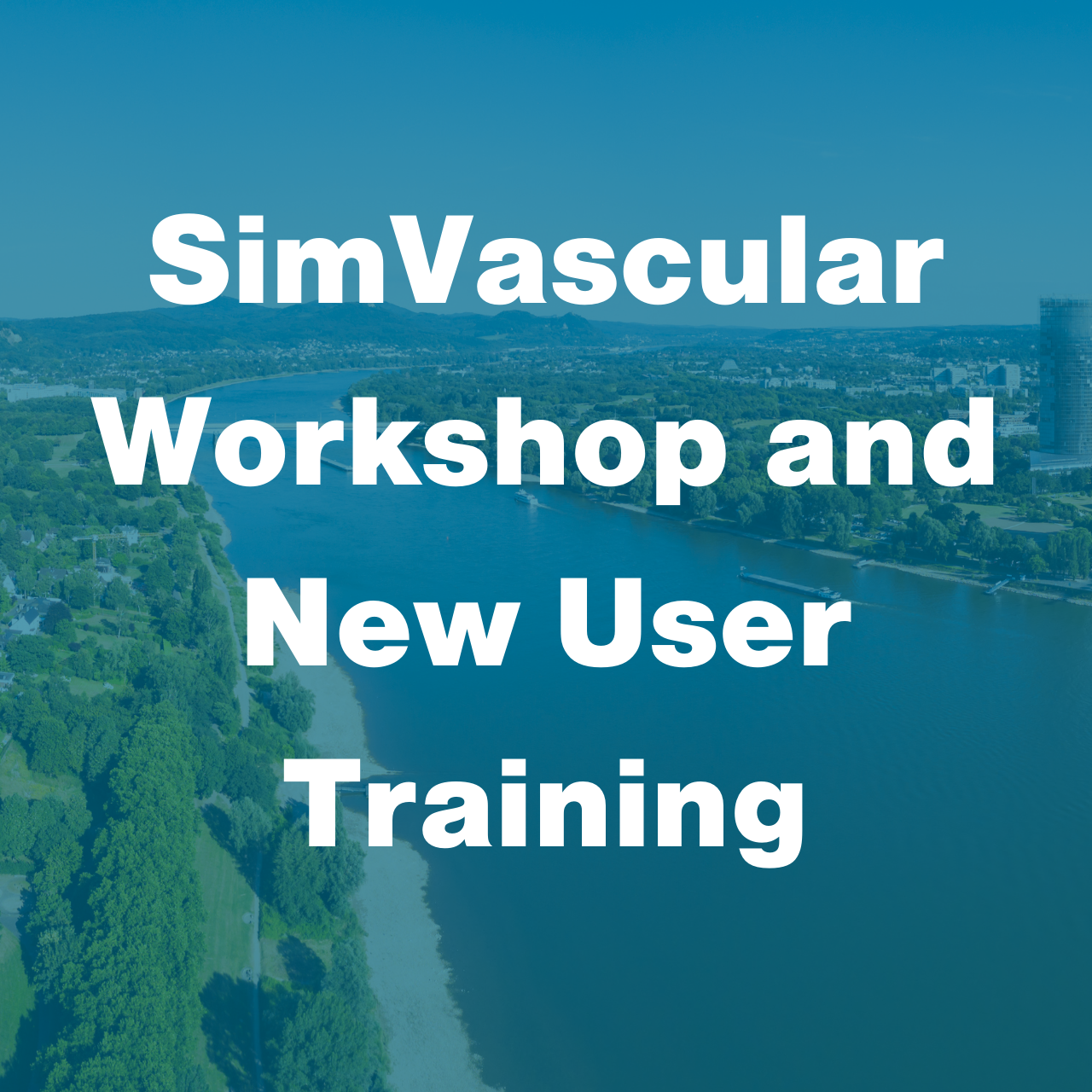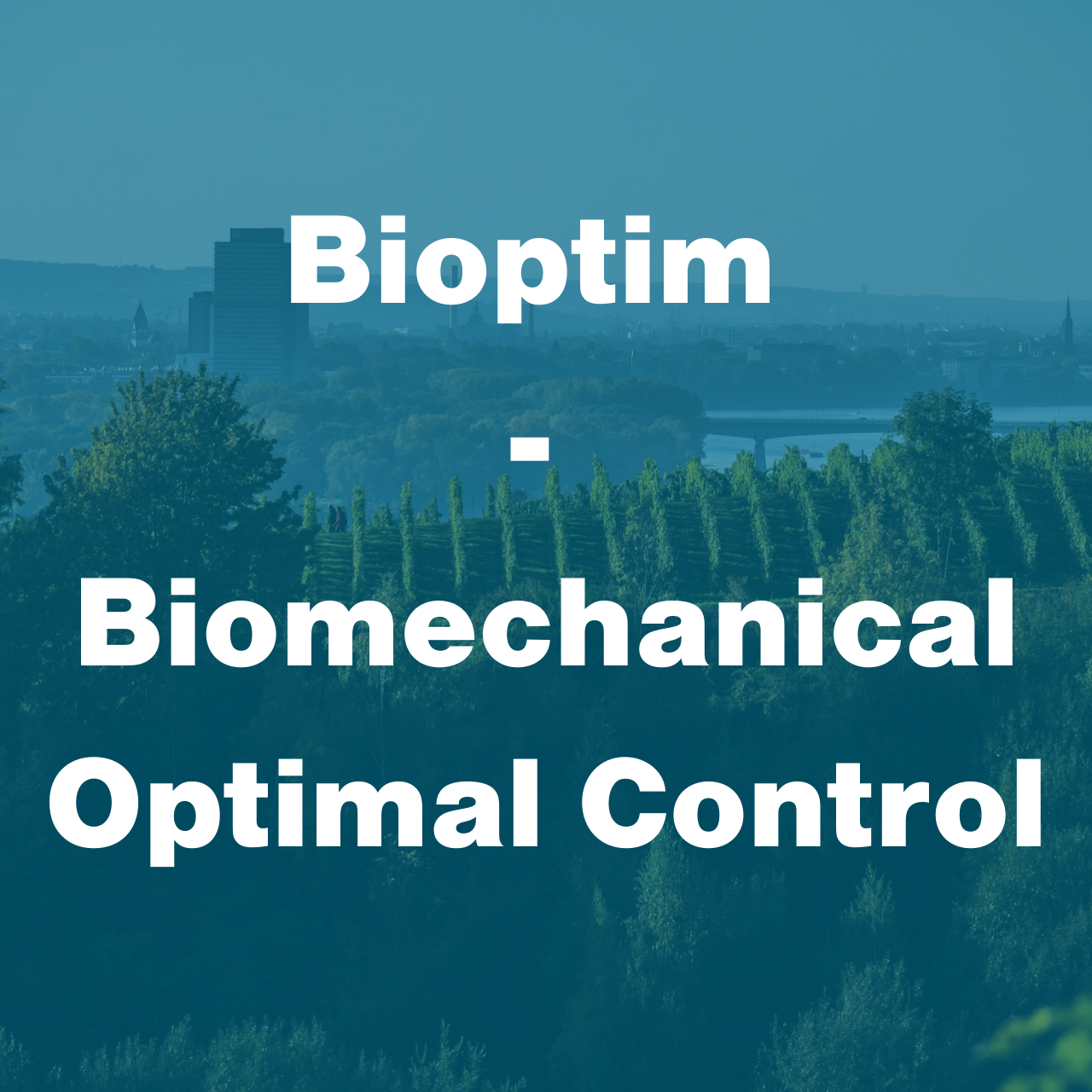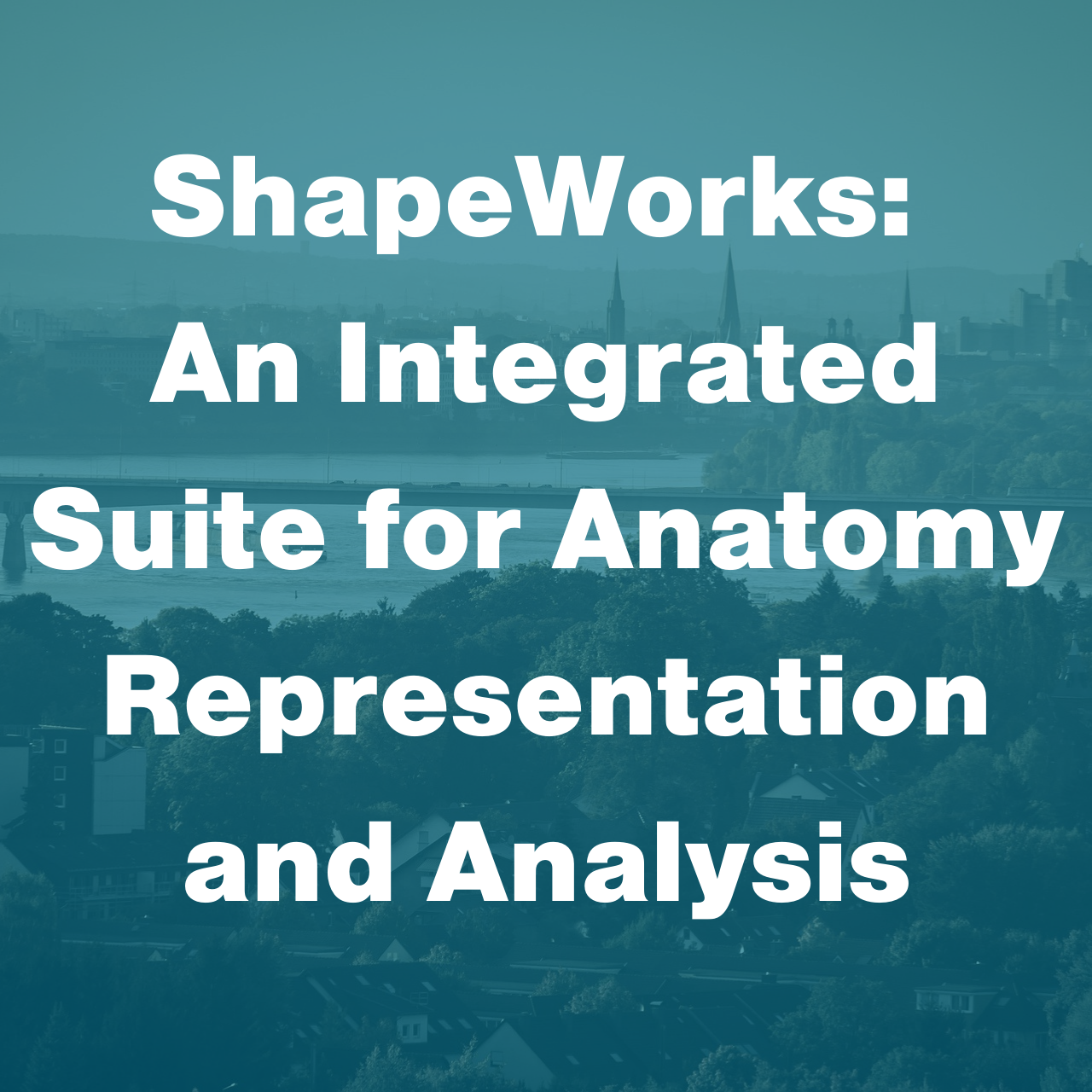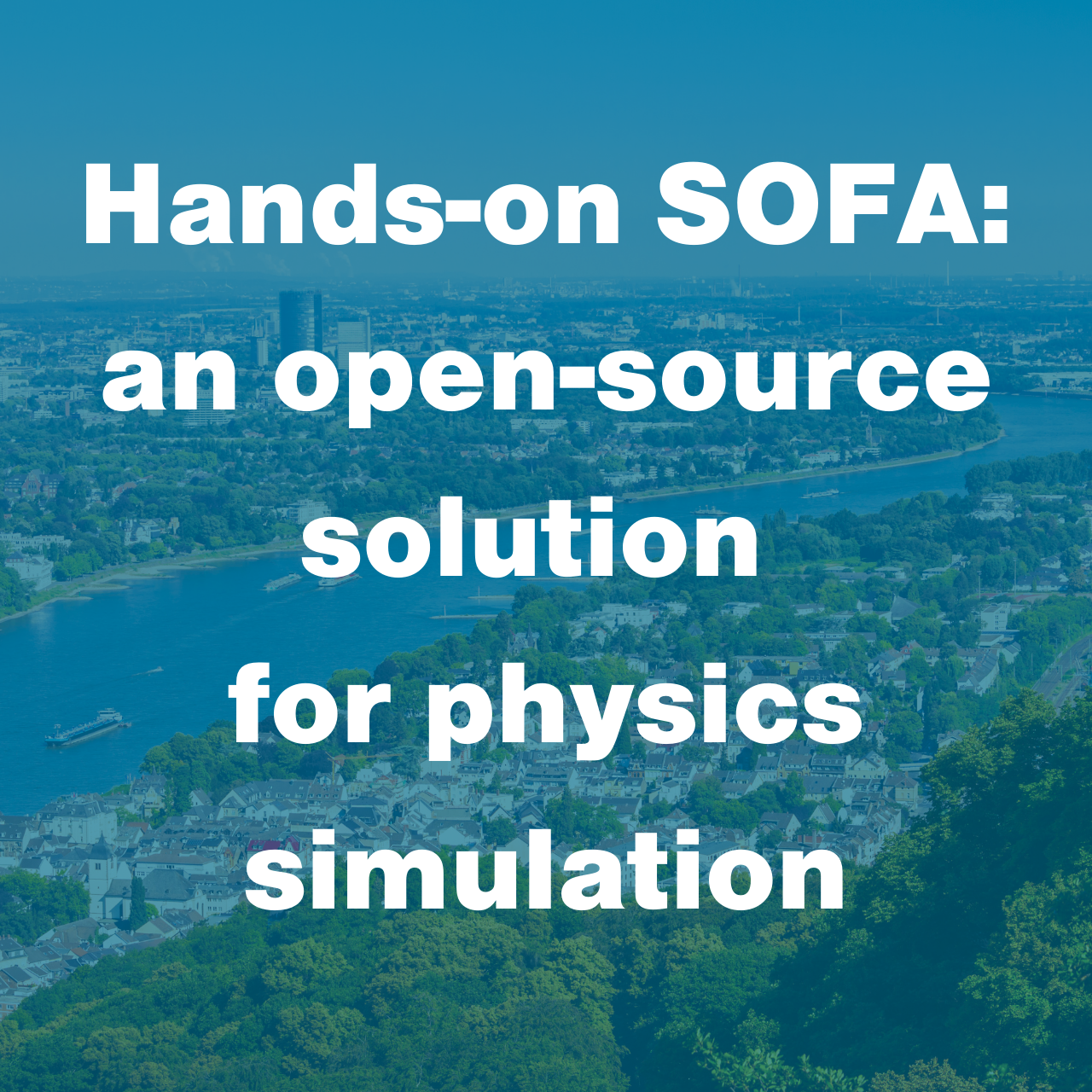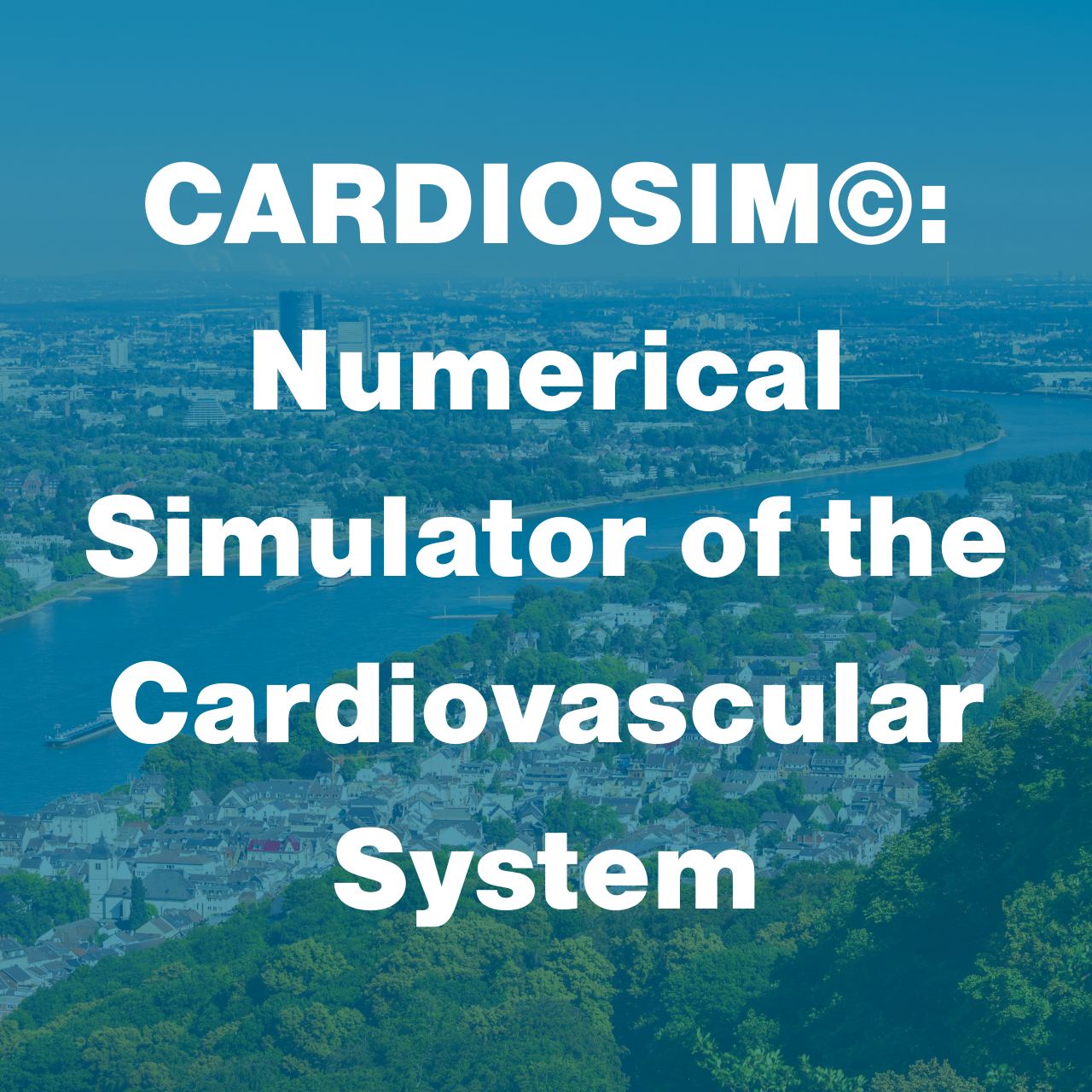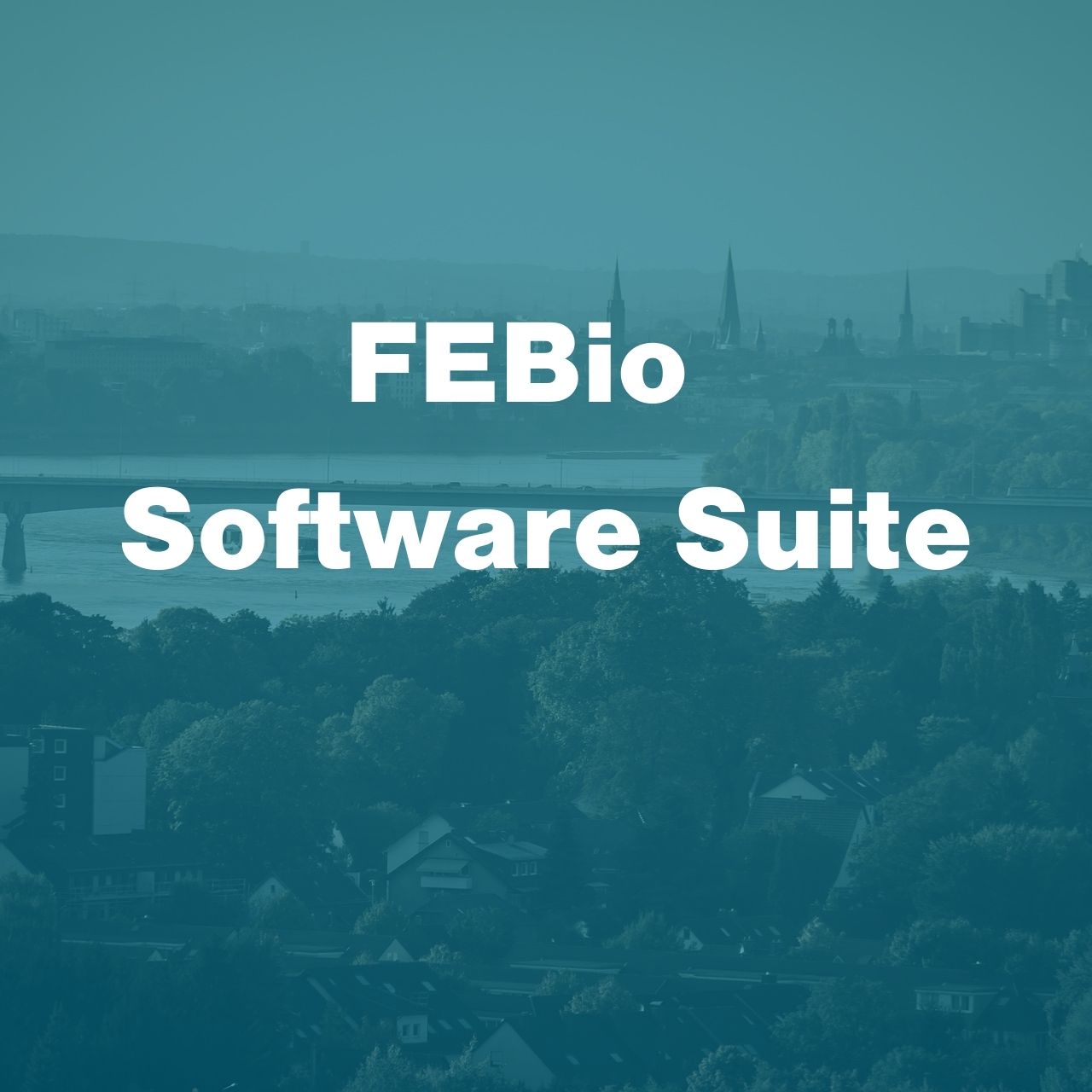SimVascular Workshop and New User Training
Organizers:
- Alison Marsden, Stanford University
- Shawn Shadden, UC Berkeley
- David Parker, Stanford University
- Nathan Wilson, Open Source Medical Software Corporation
- Vijay Vedula, Columbia University
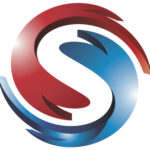
SimVascular is the only fully open source software package providing a complete pipeline from medical image data to cardiovascular blood flow simulation results and analysis (www.simvascular.org). It offers capabilities for image segmentation, unstructured adaptive meshing, physiologic boundary conditions, and two Navier-Stokes finite element solvers with fluid structure interaction capabilities, including large deformation motion with an Arbitrary Lagrangian Eulerian (ALE) formulation. An accompanying vascular model repository provides over 100 clinical data sets with simulation results from different parts of the vasculature to enable research. Extensive online documentation and tutorials with clinical examples are provided online. In this workshop, we will interactively take new users through a step-by-step tutorial, covering basic steps of model construction, meshing, flow simulations, and best practices for high quality results. We will also introduce several new features of SimVascular, including a module for image segmentation with machine learning, a python scripting interface, and a pipeline for reduced-order modeling with a 1D solver. Following a series of interactive demonstrations, we will moderate a question and answer session for current and potential users.
BIOPTIM – Biomechanical Optimal Control
Organisers:
- François Bailly
- Benjamin Michaud
Université de Montréal, Faculté de Médecine, Laboratoire de Simulation et de Modélisation du Mouvement, Laval, QC H7N 0A5, Canada
https://github.com/pyomeca/bioptim
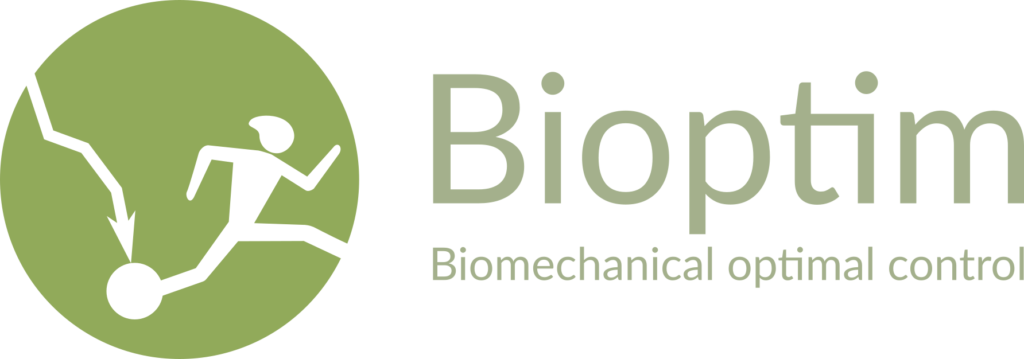
Many approaches exist to discretize and solve optimal control problems. However, biomechanics dedicated tools are rare. Four interrelated components are implemented in bioptim to make it an efficient optimal control software for biomechanics 1) a direct multiple shooting discretization method using explicit and implicit integrators 2) the biorbd [1] backend, an efficient musculoskeletal modeling software that includes multibody kinematics and dynamics and muscle dynamics, which is fully compatible with 3) CasADi, an algorithmic differentiation software that allows for an efficient and exact derivative estimation to solve the program in a reasonable time, and 4) the robust (Ipopt) and fast (ACADOS) nonlinear programming solvers. bioptim includes more than 40 examples to get started that explore a wide variety of its features (e.g., define cost function, bounds, constraints, dynamics, and parameters) as well as options for discretizing and solving the OCP. Written in Python, with dozens of cost and constraint functions (marker-tracking, EMG-tracking, states and controls minimization, etc.) and various dynamics functions (torque-driven to muscle-driven, with or without contact forces), users can easily implement custom functions to cover all their needs.
ShapeWorks: An Integrated Suite for Anatomy Representation and Analysis
Organisers:
- Shireen Y. Elhabian
Scientific Computing and Imaging Institute, School of Computing, University
of Utah
Co-Organizers:
- Amy L. Lenz, Department of Orthopaedics, School of Medicine, University of Utah
- Penny Atkins, Scientific Computing and Imaging Institute, School of Computing, University of Utah
Software link: https://github.com/SCIInstitute/ShapeWorks
Documentation link: http://sciinstitute.github.io/ShapeWorks/

The morphology (or shape) of anatomy forms a common language amongst clinicians and researchers since anatomical abnormalities are frequently tied to impaired function. While these observations are often qualitative, finding subtle quantitative differences in shape requires the application of mathematics, statistics, and computing to parse the anatomy into a numerical representation that is consistent across the population-of-interest. ShapeWorks is an open-source software that enables learning population-level shape representation derived from medical imaging data (e.g., CT, MRI) and the associated 3D models of anatomy generated from them. The utility of ShapeWorks has been demonstrated in a range of biomedical applications, including orthopaedics, cardiology, psychology, and biological phenotyping. ShapeWorks has the potential to transform the way researchers approach studies of anatomical forms. Hence, the goal of this workshop is to introduce the CMBBE community to an integrative, user-friendly, and scalable computational solution that leverages ShapeWorks for constructing statistical shape models of general anatomy. This workshop will introduce theoretical applications of statistical shape modeling, highlight the robust utility of ShapeWorks, and present clinical applications to link physics, form and function of population-based modeling of anatomical variation. We have assembled a unique interdisciplinary team consisting of a computer scientist (Shireen Elhabian, PhD) and software engineer (Alan Morris, MS) that brings together decades of experience in statistical modeling, medical image analysis, machine learning, and software development, and biomechanics researchers (Andrew Anderson, PhD; Heath Henninger, PhD; Amy Lenz, PhD; and Penny Atkins, PhD) to showcase the utility and impact of ShapeWorks on the biomedical engineering and clinical research communities.
Hands-on SOFA: an open-source solution for physics simulation
Organisers:
- Hugo Talbot (Inria)
Framework link:
https://www.sofa-framework.org

SOFA is an open-source framework for interactive physics simulation, with an emphasis on soft body dynamics. Further to 15 years of research and development, the framework is made up of a stable core providing state-of-the-art models and numerical methods. Its LGPL v2.1 open-source license (permissive and non-contaminating) and its plugin architecture foster the development of prototypes and products under any commercial license. Today, SOFA benefits from a large international community made up of research centers and companies.
Engineering simulation software has become invaluable within many industries. The role of simulation in all medical curricula to safely learn and rehearse surgical procedures significantly increased in the last decade. Research centers and companies rely on SOFA to build realistic simulations for surgical training and planning with haptic, VR/AR technologies.
Physics simulation with SOFA has applications beyond healthcare. For device manufacturing, SOFA can be a strategic approach to reduce the duration of the design process and its costs, by predicting the interaction between the product and its physical environment. In robotics, teams within the community aim at revolutionizing how to control and design robots using simulation.
The SOFA Consortium staff regularly organizes training sessions to provide a wide introduction to SOFA and its community while ensuring the mathematical, physical and computer science backgrounds in order to start in the best conditions with SOFA.
The tutorial day follows a proven program:
• It starts with an overview of SOFA and its community
• Examples of academic and industrial uses of SOFA are given to illustrate the range of applications
• A user tutorial then allows to understand how to build step-by-step simulation
• We cover a second time the tutorial to understand the conservation laws governing the simulation and the associated code
CARDIOSIM©: Numerical Simulator of the Cardiovascular System
Organisers:
- C. De Lazzari, National Research Council, Institute of Clinical Physiology UOS of Rome, Italy
- M. Capoccia, Department of Biomedical Engineering, University of Strathclyde, Glasgow, UK
- B. De Lazzari, Department of Engineering, Roma Tre University, Italy
- A. Iacovoni ASST – Papa Giovanni XXIII Hospital, Bergamo, Italy
Documentation link: https://cardiosim.dsb.cnr.it/
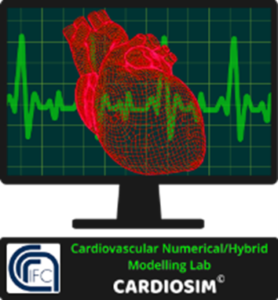
CARDIOSIM© is a software simulator of the human cardiocirculatory and respiratory system, developed in the Cardiovascular Numerical/Hybrid Modelling Lab of the CNR Institute of Clinical Physiology (Rome). The cardiovascular simulator runs on PC with Microsoft Windows operating system.
This software simulator platform has a modular structure that consisting of seven different general sections, which can be assembled to reproduce different patho-physiological conditions. The complexity of the assembled model depends on the context in which it must be used.
This numerical simulator can reproduce the most important circulatory phenomena in terms of pressure and volume relationships. It represents the whole circulation using a lumped-parameter model and enables the simulation of different cardiovascular conditions on the basis of the Starling’s law of the heart.
READ MORE
FEBiO Software Suite
Organisers:
- Steve Maas, University of Utah
- Jeffrey Weiss, University of Utah
- Gerard Ateshian, Columbia University
Website: FEBio.org
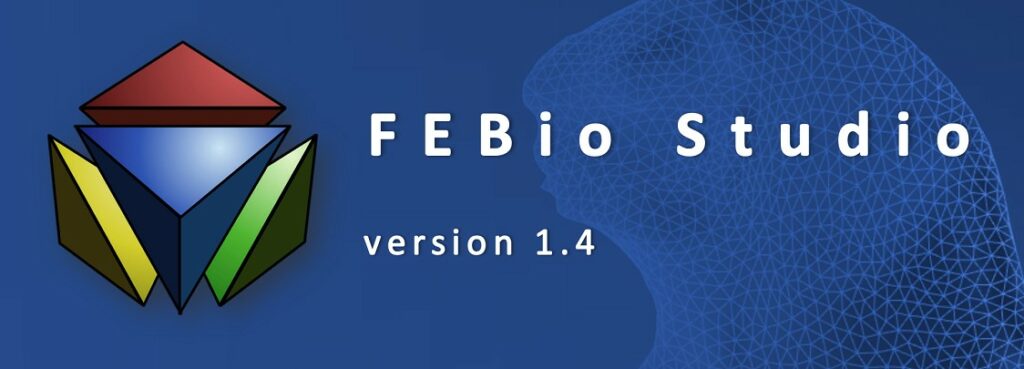
FEBio is a software tool for nonlinear finite element analysis in biomechanics and biophysics and is specifically focused on solving nonlinear large deformation problems in biomechanics and biophysics. Aside from structural mechanics, it can also solve problems in mixture mechanics (i.e. biphasic or multiphasic materials), fluid mechanics, reaction-diffusion, and heat transfer. As a true multiphysics code, it can also solve coupled physics problems, including fluid-solid interactions.
FEBio Studio is the main software tool for developing, running, and analyzing FEBio models. It offers a graphical user interface for interacting with the FEBio software. Since FEBio is a command-line code, it uses file-based communication. FEBio Studio is the easiest way for creating FEBio input files, and for visualizing and analyzing the FEBio output files. In addition, FEBio Studio offers access to an online model repository, where users can quickly find example problems, tutorial models, as well curated models used in peer-reviewed research publications.
This workshop will focus on the latest features available in FEBio/FEBioStudio, such as improved modalities for mesh generation and cleaning up imported meshes, biphasic frictional contact, biphasic-fluid-structure interactions, and reactive plasticity.
GIBBON Workshop
Organisers:
- Dr. Kevin Moerman, NUIG Galway, Ireland, (kevin.moerman@nuigalway.ie)
Get started right now!
- Explore the GIBBON website
- Install GIBBON
- Check out the README and the getting started section.
- Find the project on GitHub and learn how you can join the community and contribute!
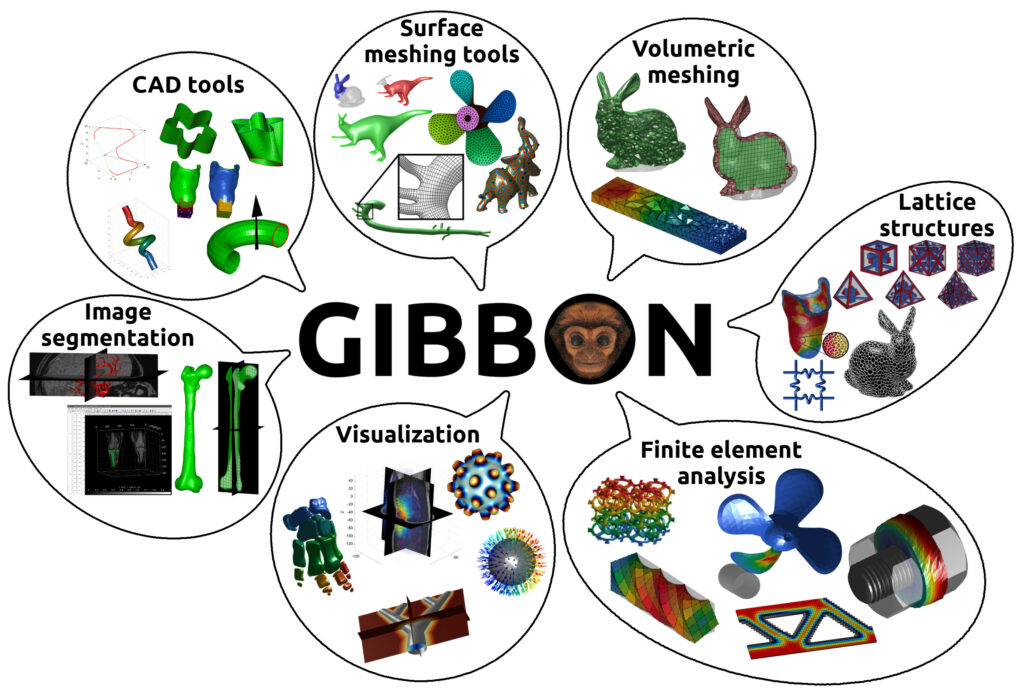
Join this workshop to learn about GIBBON: a FREE and open-source MATLAB toolbox for segmentation, image-based modelling, visualization, meshing, and finite element analysis. GIBBON includes an array of image and geometry visualization and processing tools and is interfaced with free open source software such as TetGen, for robust tetrahedral meshing, and FEBio (or Abaqus) for finite element analysis. The combination provides a highly flexible image-based modelling environment and enables advanced inverse finite element analysis.
Learning objectives
Through this workshop you will be introduced to:
- Finding GIBBON documentation and running demos
- Obtaining surface geometry from 3D image data
- Optimizing surface meshes through smoothing and remeshing
- Performing tetrahedral meshing using GIBBON and TetGen
- Specifying finite element model boundary conditions in GIBBON
- Running GIBBON coded FEBio models from MATLAB
What to bring/install:
- Please bring your own laptop.
- Have MATLAB installed (the latest preferred or at least R2016)
- Have FEBio installed
- Have GIBBON installed
- Have a text editor installed which is able to view large XML files, e.g. NotePad++ or Atom.
